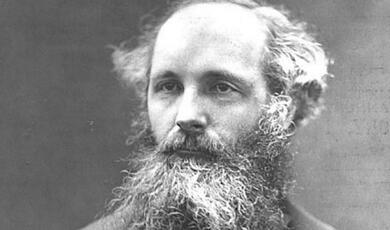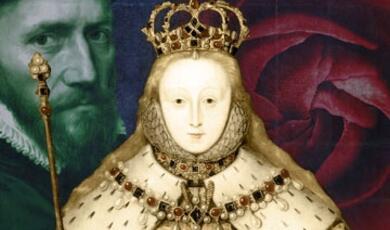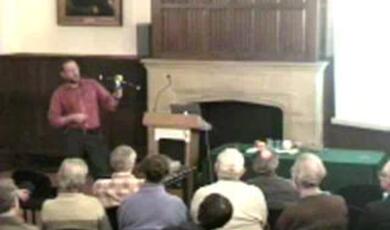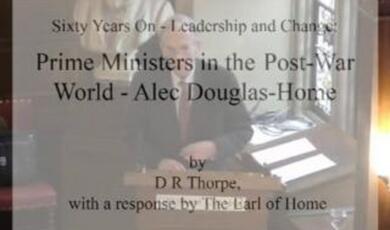Mathematics in the modern age - The 18th century: Crossing bridges
Share
- Details
- Transcript
- Audio
- Downloads
- Extra Reading
What shape is the Earth? How do strings vibrate? Can you construct a 65,537-sided polygon? And can you cross the seven bridges of Konigsberg? While British mathematics drowned in Newtonianism, major bridges were being crossed on the Continent...
Download Transcript
MATHEMATICS IN THE MODERN AGE - THE 18TH CENTURY: CROSSING BRIDGES
Professor Robin Wilson
Introduction
After Isaac Newton had published his celebrated PrincipiaMathematicain 1687 – the book that explained gravitation and how the planets move – his life changed for ever, and in a way that would also affect the nature of British mathematics for the next 150 years or so. His book was highly praised in Britain, even though few people could understand it, and the reclusive Newton was now a public figure.
After spending a year as an ineffective Member of Parliament for Cambridge University – apparently he spoke only once, and that was to ask an official to open a window – Newton became Warden, and later Master, of the Royal Mint, living in the Tower of London, supervising the minting of coins, and punishing counterfeiters. He had now left Cambridge for good.
In 1703 Newton’s arch-rival Robert Hooke died, with repercussions for both Gresham College where he was Gresham Professor of Geometry, and the Royal Society which still held its meetings in Sir Thomas Gresham’s former house. The rebuilding of the Royal Exchange after the Great Fire of 1666 had been costly, and attendances at Gresham lectures were then sparse, so proposals were made to save money by rebuilding the College on a smaller scale. Parliament was petitioned for approval, with only Robert Hooke, now frail and the only professor resident in the College, holding out against the plans. The bill failed, but further attempts were made after Hooke’s death in 1703.
In the event, the Gresham residence survived for a further 60 years before being demolished, but in 1768, the Gresham College Bill finally passed through Parliament, and the College was pulled down. The lectures were transferred to the Royal Exchange, where they were presented for the next 70 years.
With Hooke out of the way, Isaac Newton became President of the Royal Society in 1703. He also joined the discussions about the College, petitioning Queen Anne for land on which the Society could build. Around 1710 the Royal Society moved out of Gresham College.
Newton’s influence
Once Newton had become President of the Royal Society, power went to his head. First he apparently ordered that all portraits of Hooke should be destroyed – certainly none has survived.
Next, he started to influence scientific appointments, such as the choice of professors in the ancient universities of Oxford and Cambridge, and the Astronomer Royal at Greenwich. The result was that Newtonian philosophy soon became deeply embedded everywhere.
Indeed, irritated by the priority claims of Leibniz on the Continent over the invention of the calculus, Newton around 1713 set up a Royal Society Commission to investigate the matter. For this purpose he chose the members of the Commission himself and wrote most of the evidence for them, so it was hardly surprising that the Commission came down in favour of Newton’s priority – completely ignoring the fact that Leibniz had been the first to publish his results. In fact, so convenient was Leibniz’s choice of notation, such as the integral sign, that even now we use it in preference to Newton’s notation.
Compared with such intellectual giants as Leibniz, and later the Bernoullis, Euler, and their illustrious successors Lagrange, Laplace and Gauss, the British mathematicians of the time seem rather unimportant – names such as Brook Taylor and Colin Maclaurin pale into insignificance, even though by British standards they were substantial figures.
British mathematics
Newton died in March 1727, and the commemorations lasted a week. His body lay in state in Westminster Abbey for a week, and at the funeral his pall was borne by two dukes, three earls and the Lord Chancellor. No previous scientist had ever been so revered or so honoured.
Unfortunately, because of Newton’s power and influence British mathematics would be held up for over a century while great advances were being made on the Continent. To see why this was, let us first look at the British mathematicians. What were their main achievements?
Brook Taylor is now mainly remembered for the ‘Taylor series’, or ‘Taylor expansion’, in which a given function is written as a series of powers of x. But he was not the first to obtain such series – and nor was the Scottish mathematician Colin Maclaurin – so the current terms ‘Taylor expansion’ and ‘Maclaurin expansion’ seem something of a misnomer. However, Brook Taylor did contribute some useful work on geometry – specifically on perspective. There’s a painting of him with the manuscript of his book, a thorough treatise on the geometrical ideas underlying perspective drawing, starting from the simplest notions of projection; indeed, it seems to have been Taylor who introduced the term ‘vanishing point’. Taylor’s book was certainly influential – here’s a later treatise on perspective by Thomas Malton which includes the inscription (on the building in the middle) ‘To the memory of Dr. Brook Taylor in Gratitude for his sublime principles on Perspective’.
In contrast, Newtonian calculus was coming to be soundly criticised. In 1734 George Berkeley, later Bishop of Cloyne in Ireland, wrote a treatise entitled ‘The Analyst, or a discourse addressed to an infidel mathematician – probably Newton’s supporter Edmond Halley – wherein it is examined whether the Object, Principles and inferences of the modern analysis are more distinctly conceived, or more evidently deduced, than Religious Mysteries and Points of Faith’. Berkeley was criticising the shaky foundations of Newton’s calculus, and consequently all of the physics and gravitation theory that was based on it. In particular, Newton had mentioned ‘infinitely small quantities’, a term whose meaning is unclear; in using these quantities he first supposed them to be unequal to 0, and later equal to 0.
He used these fluxions like the scaffold of a building, as things to be laid aside or got rid of. What are these fluxions? The velocities of evanescent increments? And what are these same evanescent increments? They are neither finite quantities, nor quantities infinitely small, not yet nothing. May we not call them the Ghosts of departed quantities?
In spite of Berkeley’s flowery language, his criticisms were well informed, and hurt the Newtonians to the quick. They rushed to the defence of Newton’s calculus, and Colin Maclaurin tried to put Newton’s work on a rigorous footing. Maclaurin’s book was much admired, but little read, and the problems were not fully overcome until the 1820s, when the French mathematician Cauchy introduced the concept of a limit.
Gravitation
But if Newton’s calculus was under threat, his gravitation (as presented in the Principia) was achieving notable successes. Newton had predicted that the earth’s motion leads to a flattening of the earth at the poles, so that the earth is onion-shaped, whereas Descartes’s rival ‘vortex theory’, which Newton demolished in Book II of the Principia, had predicted a lengthening at the poles, so that the earth is lemon-shaped. The difference mattered – in particular, to those navigating at sea – and national pride was at stake. Eventually, in the 1730s, geodetic missions were sent to measure a pendulum’s time of swing in Peru on the equator and Lapland in the far north, in order to determine who was correct. Newton was proved to be right.
In consequence, much of the earlier Continental suspicion about Newton’s ideas on gravitation disappeared. Newton had always been admired in the Low Countries, but in France, they preferred the vortex theory – indeed, the only French supporters of Newton had been Voltaire and his lover Madame du Châtelet who made a French translation that’s still virtually the only one still in use today.
During the eighteenth century Newton’s ideas of gravitation were developed by several people. Particularly important in this was the new area of differential equations, leading to a monumental five-volume work on celestial mechanics in 1799 by Pierre-Simon Laplace – the French mathematician and physicist who once remarked that since there was only one universe it could be given to only one person – the fortunate Isaac Newton – to discover its fundamental law.
Another success for Newtonianism was the reappearance of Halley’s comet. On the basis of the results in Newton’s Principia, Halley predicted that a comet that he had seen in 1680 was the same as the one that had appeared in 1533 and 1607, and would reappear around Christmas 1658. When it did so, sixteen years after Halley’s death, Newtonian gravitation received a great boost and the comet was named after Halley. It is small wonder that Alexander Pope had been moved to say about the Principia:
Nature and Nature’s Laws lay hid in night;
God said, Let Newton be!, and all was Light.
The ancient universities
Meanwhile, Newton’s ideas increasingly pervaded the ancient universities of Oxford and Cambridge. As far back as 1692, only five years after the appearance of the Principia, David Gregory’s inaugural lecture as Savilian Professor of Astronomy in Oxford emphasised Newton’s contributions to celestial physics. And James Stirling wrote a book on Newtonian lines of the third order, the first proficient exposition of Newton’s work on cubic curves.
Lectures on Newtonian science were given in the Old Ashmolean Museum, the earliest building in England for the teaching of experimental science. They were presented in a similar form for many years – in particular, byJames Bradley, the Savilian Professor of Astronomy. Bradley was the living embodiment of the Newtonian tradition, having known both Newton and Halley personally and being Halley’s acknowledged successor both in Oxford and as Astronomer Royal at Greenwich. Most of the men who attended the lectures at the Old Ashmolean seem to have been Bachelors of Arts preparing for their Master of Arts degrees and for holy orders.
By the time of his death in 1762, Bradley had revolutionised astronomical observation. His published observations set a new standard for accuracy and procedure which subsequent astronomers were obliged to follow. In particular, his immediate successor as Savilian professor, Thomas Hornsby, masterminded the construction of the Radcliffe Observatory in Oxford – a beautiful building, based on the Tower of the Winds in Athens, which soon became the best-equipped astronomical observatory in the world. It was the first academic establishment to combine teaching and research in astronomy, using instruments of the highest quality. Unfortunately, it was all too good to last. By the time Hornsby died, its instruments had become antiquated, compared with those elsewhere in Europe.
Meanwhile, in Cambridge, interesting things had been happening. William Whiston, Newton’s successor as Lucasian professor, had lost his appointment on account of his fervent religious views. In 1714 he co-authored a pamphlet on the problem of finding longitude at sea, one of many such tracts on the subject. Incidentally, Hogarth’s engraving from The Rake’s Progresslampoons a mad mathematician at the back scribbling a method – actually, William Whiston’s method – for determining longitude.
Whiston’s successor, Nicholas Saunderson, delivered a course of lectures on experimental philosophy, which greatly inspired the young John Harrison, who made a copy headed ‘Mr Saunderson’s Mechanicks’. These mentions of the longitude problem and of John Harrison bring us to one of the most interesting stories of the time – the determination of longitude at sea.
Longitude
Everyone knows the lines of latitude and longitude on the globe – they’ve been used since before the birth of Christ, and Ptolemy recorded the latitude and longitude of some 8000 places around 200 AD. The horizontal lines of latitude are easy to measure while at sea – one simply measures the angle between the horizon and the sun or certain stars, or it can be calculated from the length of the day. But unlike latitude, where there’s a fixed central line (the equator), the vertical lines of longitude are measured from an arbitrary line – very recently chosen to be the meridian at Greenwich. To find one’s longitude at sea seems simple enough: one needs to compare one’s local time with the time at home – each hour of difference corresponds to 15 degrees of longitude. As the anonymous ‘Ballad of Gresham College’ observed:
The College will the whole world measure;
Which most impossible conclude,
And Navigation make a pleasure
By finding out the Longitude.
Every Tar shall then with ease
Sayle any ship to the Antipodes.
The problem was that the clocks of the early 18th century were unreliable at sea. With the rolling of the ship pendulum clocks cannot be used, while those containing oil as a lubricant are unreliable in very hot or very cold climates.
This was not just a theoretical problem – many lives had been lost at sea through the inaccurate determination of longitude. Indeed, in 1707, sixteen hundred lives were lost in a single night, when Sir Cloudisley Shovell’s ship The Association(and three others) struck the rocks around the Isles of Scilly. The British Parliament, stung to action, set up the Board of Longitude and offered the enormous prize of £20,000 for a successful and reliable solution.
The long saga of John Harrison’s 40-year attempt to construct a suitable chronometer is well known. His first marine timekeeper, known as H1, stood two feet high, took five years to make, and was fairly accurate. Eventually he produced the pocket-watch size H4, which was tried successfully on a number of transatlantic voyages. James Cook took a version of it on his voyages to the southern seas, and pronounced himself pleased. But the Longitude Board was under the influence of Nevil Maskelyne, the Astronomer Royal, who sought an alternative lunar method, and it was only after the direct intervention of King George III, who was interested in science, that the prize went where it deserved.
The Continent
With Newton’s supporters in every position of authority, it is not surprising that the British academic community largely ignored the great mathematical advances on the Continent.
Even if Newton had been the first with the calculus, Leibniz was the first to publish it, in 1684 and 1686, but his books were not easy to read. The Bernoulli brothers, Jakob and Johann, soon mastered and developed Leibniz’s ideas, introducing the word ‘integral’ and developing the idea of polar coordinates. Jakob Bernoulli also worked on the theory of probability, proving the ‘law of large numbers’, that if an experiment is performed often, there’s a high probability that the outcome is what one would expect – for example, if you toss a fair coin two million times, the number of heads will very probably be close to one million.
Johann Bernoulli was just as prolific, and his employer, the Marquis de l’Hôpital, produced the first printed calculus text. As was the common practice, this incorporated many of Bernoulli’s own results under his employer’s name, such as the so-called ‘l’Hôpital’s rule’ for calculating limits. But l’Hôpital was a brilliant writer, and his calculus book exerted great influence, running into many editions.
The next important Continental figure was Leonhard Euler, probably the most prolific mathematician of all time. He worked in all areas of mathematics and the physical sciences, from the purity of number theory via mechanics and differential equations, to magnetism and astronomy.
Euler was the first to use the idea of a function, and he introduced the notation f(x) for a function of x. Indeed, he also introduced other notations that we still use: ifor the square root of minus 1, efor the exponential number, and a capital Greek sigma for summation. More information about the Euler’s life and work will be given in a later lecture.
Euler worked extensively on the calculus, as on everything else, and in 1755 produced a massive tome on the differential calculus. This contained all the latest results on the subject, many of which were due to him. He followed it in 1768 to 1770 with a three-volume treatise on the integral calculus.
The next person on the scene was Jean d’Alembert, a leading Enlightenment figure who wrote many of the mathematical articles for Diderot’s Encyclopédiewhich attempted to classify the knowledge of the time. D’Alembert had earlier investigated the way in which a wave in a vibrating string behaves – finding a differential equation, the so-called ‘wave equation’, that is satisfied by the wave form under various initial conditions.
D’Alembert was also concerned about the criticisms of the calculus by Berkeley and others, and attempted to sort things out by introducing the idea of a ‘limit’. He was only partially successful, and it was not until Cauchy in the 1820s that this was successfully accomplished.
A different approach was taken by Lagrange, who wrote the first ‘theory of functions’. His method was to avoid completely any mention of tangents, pictures, etc., and to define functions in terms of infinite ‘power series’. For example, if a function can be written as f(x) = a+ bx+ cx2 + dx3 + …, then its derivative can be written as f′(x) = b+ 2cx+ 3dx2 + … ; for example, we can differentiate sin x= x– 1/6x3 + 1/120x5 – … to give cos x= 1 – 1/6x2 + 1/24x4 – … .
Euler
We now turn to some contributions of Euler. The first concerns a puzzle that he encountered in the 1730s – the famous problem of the ‘seven bridges of Königsberg’. The problem is to cross over each of the bridges just once, and return to your starting point. Euler employed a counting argument, counting the number of bridges emerging from each land area, and proved that this cannot be done.
Euler’s considered this problem in the context of a desire of Leibniz: in a letter to Christian Huygens in 1679, Leibniz had asked for a type of geometry that involves no metrical ideas such as length, distance or angle. It’s what we now call topology, or rubber-sheet geometry ― the problem is essentially the same if we draw it on rubber and stretch it.
Here’s a letter that Euler wrote to Giovanni Marinoni, Court Astronomer in Vienna, in 1736, with his own drawing of the bridges, and describing his views on the problem:
This question is so banal, but seemed to me worthy of attention in that neither geometry, nor algebra, nor even the art of counting was sufficient to solve it. In view of this, it occurred to me to wonder whether it belonged to the geometry of position, which Leibniz had once so much longed for. And so, after some deliberation, I obtained a simple, yet completely established, rule with whose help one can immediately decide for all examples of this kind whether such a round trip is possible.
These days, Euler’s solution of the Königsberg bridges problem is considered as the first contribution to graph theory, and is solved by looking at a graph, or network, with points representing the land areas and lines representing the bridges. But Euler never did this ― the graph that represents this puzzle was not drawn for another 150 years.
Another preoccupation of Euler’s was mentioned in a letter to his friend Christian Goldbach, in 1750. Goldbach is mainly remembered for the Goldbach conjectureinvolving prime numbers, that every even number can be written as the sum of two prime numbers ― for example,
10 = 5 + 5, 20 = 13 + 7, 30 = 19 + 11, and so on.
For centuries, mathematicians had been studying polyhedra, such as a cube – indeed, Plato had described the regular ones in the fourth century BC. But Euler was the first to look at their edges, and to ask how many there are. In his letter to Goldbach Euler made the remarkable observation that the numbers of vertices (corners), edges and faces are always related by a simple formula:
(no. of faces)+(no. of vertices)=(no. of edges)+ 2;
for example, a cube has 6 faces, 8 vertices and 12 edges and 6 + 8 = 12 + 2. This formula is sometimes incorrectly credited to Descartes, but Descartes didn’t have the terminology or motivation to derive it. Euler’s explanation of the result, however, was deficient, and a correct proof was not given until forty years later, by the algebraist and number-theorist Legendre.
In his later life, Euler produced a delightful result on pure geometry. If we take any triangle, there are three particular points of interest. The first is the orthocentre - the meeting point of the perpendiculars from the vertices to the opposite sides. The second is the centroid - the meeting point of the three lines joining a vertex to the midpoint of the opposite site. The third is the circumcentre - the centre of the circle surrounding the triangle. Using analytical geometry - that is, calculating all their coordinates - Euler proved the pretty result that these three points always lie in a straight line, now called the Euler lineof the triangle, and that the centroid always lies exactly one third of the distance between the other two.
The last result of Euler that we’ll look at was obtained early in his life, and concerns the so-called Fermatnumbers, named after the seventeenth-century French mathematician Pierre de Fermat. These are numbers of the form (2 to the power 2n) + 1.
These are all prime numbers – but are allsuch numbers primes? Fermat had conjectured that they are, but Euler managed to show that the very next one, the ten-digit number 232 + 1, is actually divisible by 641. Since then, noother ‘Fermat number’ has been shown to be prime, so it was rather an unfortunate conjecture.
Constructing polygons
We conclude with a problem that was solved by the young Carl Friedrich Gauss in the 1790s. For thousands of years mathematicians had been trying to construct regular polygons using only an unmarked ruler and a pair of compasses. The very first proposition of Euclid’s Elements(Book I, Proposition 1) shows how to construct an equilateral triangle, and the Elementsalso contains constructions for a square and a regular pentagon. It is also simple to start with a regular n-sided polygon and construct a 2n-sided polygon, so that we can then construct regular polygons with 6, 12 and 24 sides, ones with 4, 8 and 16 sides, and ones with 5, 10 and 20 sides. But we can’t construct regular polygons with 7 or 9 sides – so which ones areconstructible?
Gauss answered this question by first describing how to construct a regular 17-sided polygon – and the general answer is surprising. He found that a regular polygon with nsides can be constructed if and only if nis obtained by multiplying any number of different Fermat primes and then doubling as often as you please. So the possibilities include an 80-sided polygon (since 80 = 2 × 2 × 2 × 2 × 5) and a 102-sided polygon (since 102 = 2 × 3 × 17). So you can now go home and try to construct a regular polygon with 65,537 sides, knowing that it can indeed be done.
© Professor Robin Wilson, Gresham College, 4 October 2006
This event was on Wed, 04 Oct 2006
Support Gresham
Gresham College has offered an outstanding education to the public free of charge for over 400 years. Today, Gresham plays an important role in fostering a love of learning and a greater understanding of ourselves and the world around us. Your donation will help to widen our reach and to broaden our audience, allowing more people to benefit from a high-quality education from some of the brightest minds.


 Login
Login







